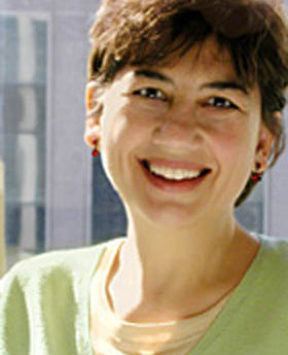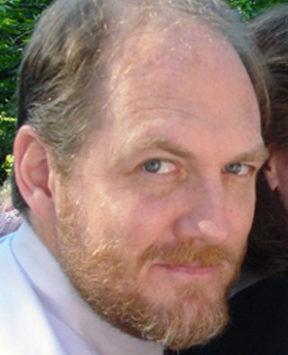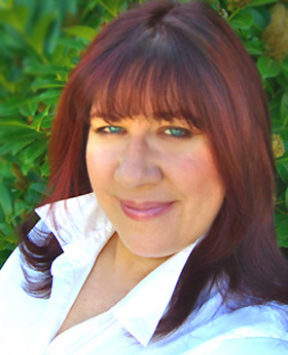The Google search engine is one of the top destination sites on the Web. Google is also popping up as the search engine on many other sites such as America Online, Ask Jeeves, Earthlink and Netscape.
Getting a Website to show up in the first ten results of a Google search is the goal for thousands of sites and just as many Web services companies that offer search engine optimization (SEO).
One instant route to prime real estate on a Google search results page is using advertising banners, also known as sponsored links. Taking this concept one step further is the success of pay-per-click placement in the search engine with Googles AdWords program.
Googles AdWords program is doing a lot of innovative things with paid search engine placement, but it can be confusing to really understand how these types of programs work and how to get the most return for the money that you would spend.
As U.S. Manager of Googles AdWords, David Fischers goal is to take some of the mystery out of these programs and offer a better understanding on how this new advertising medium works for anyone with a Website. He took a few minutes to share his advice on how to maximize the benefits of using pay-per-click placement in Google and what is click spam.
Q: Lets talk about the whole concept of pay-per-click search engine placement. Why do you think that the model of paid placement is becoming so successful when for years people scoffed at the idea that paying for placement wasnt a positive thing for the integrity of search on the net?
Fischer: There are problematic elements with the notion of being able to buy your way into search results. So what we at Google do is be really clear about it. When you do research on Google, you get your results down the center of the page. Those are our main search results and are unbiased in every way. You cant buy your way into listings. At the same time, there are a lot of folks who want their results to show up on Google and want to figure out a way to get some space on the page and advertise their product. Out of that we created the AdWords program. We like to say, You cant buy their way into search results, but you can buy their way into advertising.
Q: Can you give us an example?
Fischer: Im interested to see what concerts are coming to town, so I did a global search on Seattle concerts. I get a bunch of search results listing concerts, but off on the right side of the screen – with a colored background and indicated as sponsored links – I see a bunch of ads advertising Seattle concerts and tickets. We are basically trying to give both our users and advertisers a way to reach out to people who are potentially looking for a product or service.
Q: How many people have used the AdWord system?
Fischer: We have over 100,000 advertisers with Google, which makes us one of the largest players in this space. We believe one of the reasons we are so successful in the little over a year since weve been offering AdWords is because it gives a good return on your investment.
Q: How does it work?
Fischer: It just takes 15 minutes and a $5 sign-up fee. You pick a series of keywords or search terms. Ask yourself what are the terms someone searching on Google might use when searching for your product. The next step is to write an ad. You can choose a budget based on how much you want to spend per day. The next step, which is key to understanding how our program works, is what we call cost-per-click, which means you only pay when someone clicks on your ad. Three people may see it, but if only one person clicks on it, youre only charged for that one click. You set a maximum CPC (cost-per-click). Lets say youre willing to pay up to 50 cents for someone to click on your site. Typically you well may end up paying less than 50 cents, but that is the most youll ever pay to drive someone to your site.
Q: How can I make sure I get my banner in the top spot on the page?
Fisher: What weve done with our program is figure out a way to reward relevancy and make sure that the most relevant ads are the ones that are showing up on the search results page. To rank the ads on the page and decide which ad appears first and second and so on, we actually multiply the cost-per-click – how much are willing to pay – by the click-through rate. The click-through rate is the number of times your ad is clicked on divided by the number of times it appears. Lets say my ad appears 100 times and is only clicked on 20 times. My click-through rate is 20 percent. By factoring in the click-through rate to the ranking, if youre giving a higher click-through, thats our users way of saying, Hey, I find this to be really relevant, and were going to reward you for having an ad thats more relevant than someone else. Actually, you can pay less and your ad will appear in a higher spot. The view is if users are finding what theyre looking for, then theyre going to rely more on the ads going forward – another good thing for advertisers as well.
Q: So you actually pay less as more people click on your ad and it goes up in the display on the page just based on how many times its clicked on?
Fischer: Right. Let me just give you an example. You and I both sold concert tickets in Seattle. You are paying 50 cents per click and had a 5 percent click through rate. You multiply those two together and get 2.5. Now lets say I am bidding twice as much as you a $1 per click. Lets say my rate is only 2 percent. You multiply those two together and get 2. You could pay half as much as me but rank higher than me in the results. That really is rewarding relevant advertising.
Q: What defines the relevancy? Is it the keywords you are using? Is at the enticement of the ad itself?
Fischer: Its a combination. I would say the first key is to choose relevant keywords. The first hint I would offer is to think specific. There is a tendency with most new advertisers to think they really want people to see their ad so they pick general keywords like tickets. We find really general keywords performed less well. The more specific you are, the better return youll see. You are only targeting the traffic, the searchers, who are interested in what youre offering.
The second piece of advice is to really monitor how youre doing. You can log into your account 24/7 to check your results and make changes. Lets say you choose five keywords, then log in a day later and see four of the words are working really well with click-through rates over 3 percent, which is a pretty healthy click-through rate, but one of them is lagging behind with only a 1 percent click-through rate. You could then turn off the keyword that is not working.
The final advice I would highlight is the ad text itself. Really highlight the benefits to your product or service. If you offer free shipping, if you won an award for your customer satisfaction level, if there are certain benefits that are your key selling points – highlight those.
Another feature of the Adwords system I want to point out is we actually allow you to set up multiple ads. If you create two ads, we would just rotate those so each would show 50 percent of the time. You could later log into your account and see which one is getting a higher click-through rate. As anyone in marketing knows, certain words just do better in terms of attracting customers in getting a response.
Q: What is to prevent a user from reputedly clicking on your ad banner? I would think a lot of advertisers would be scared of that. Do you have technology that keeps that from becoming a problem?
Fischer: We do. We refer to the problem as click spam. We have a complicated click spam technology to protect against that. If we see something like that happening, you wont be charged for that. We want to make sure advertisers have a good experience.
More information about Google AdWords is at adwords.google.com.
Dana Greenlee is co-host, producer and engineer of the WebTalkGuys Radio Show, a Tacoma-based radio and Webcast show featuring technology news and interviews.






